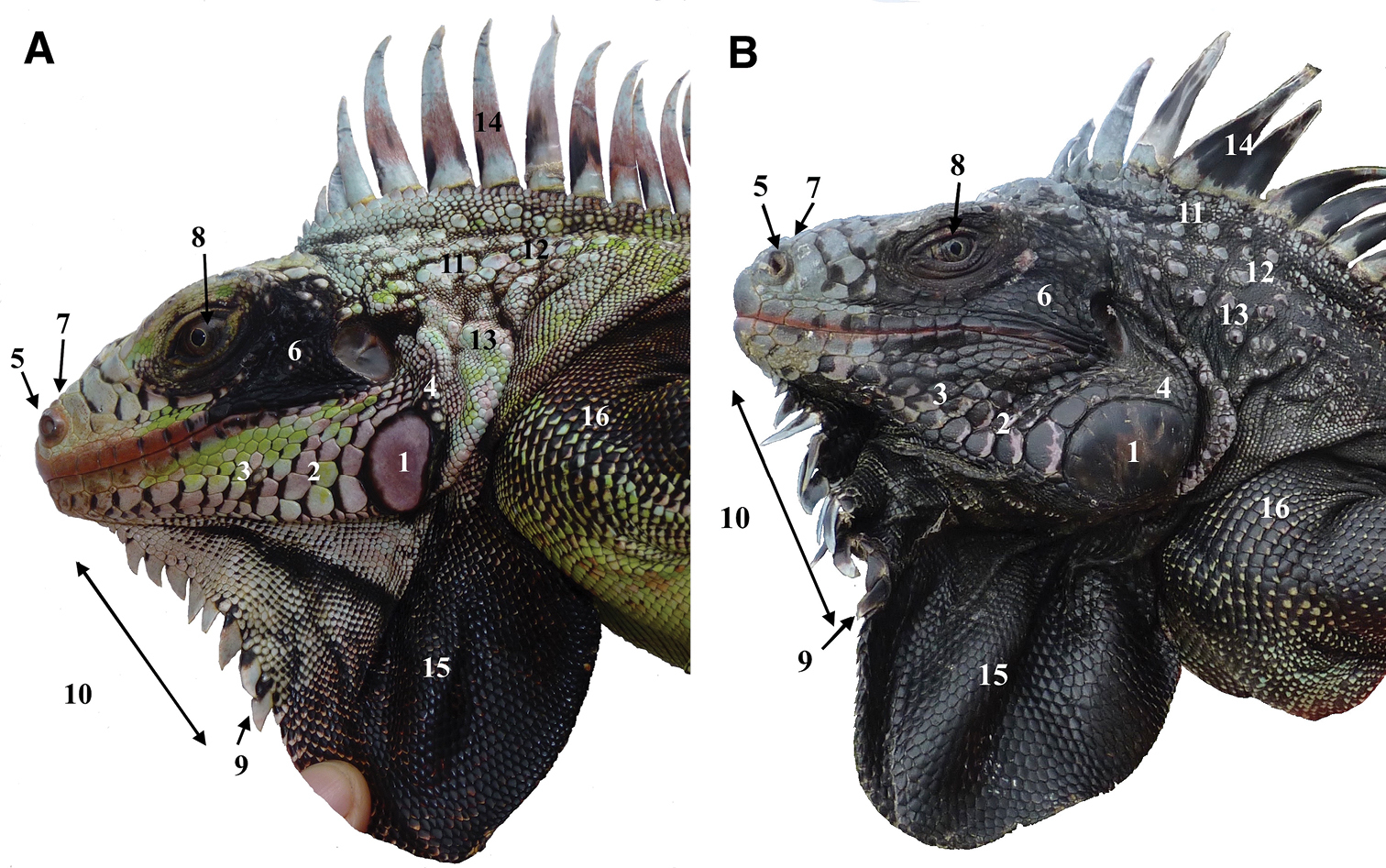
|
||
|
Comparison of morphological features of the head. A Young adult male. 1. Subtympanic plate with pink in the center. 2. Lower sublabial scales arranged in pairs of nearly identical size. 3. Black anterior edge of the lower sublabial scales. 4. Black border around the subtympanic plate. 5. Prominent nostrils. 6. Black spot between the eye and the tympanum. 7. Absence of horn and light snout. 8. Dark brown eye. 9. Triangular gular spikes. 10. Fewer than 10 gular spikes extended in the upper part of the lower dewlap. 11. High number of aligned nape tubercles. 12. Prominent light-grey tubercles. 13. Light greyish-green coloration on the neck. 14. High light-grey dorsal spines. 15. Dewlap half black. 16. Dorsal part of the limb with light-green scales becoming black with the extension of melanin from the anterior edge to the posterior edge of the scales. B Old male of Iguana melanoderma (Saba). 1. Large all-black subtympanic plate. 2. Extension of the black pigment on the sublabial scales. 3. Black coloration of the labial and upper sublabial scales. 4. Black coloration between the tympanum and the subtympanic plate. 6. Extension of the black spot around the eye and on the posterior labial and sublabial scales.7. Snout turning dark grey. 9, 10. Gular spikes turning dark grey with extension of black patches. 12. Dark grey nape tubercles. 13. Black coloration on the neck. 14. Dorsal spikes turning black. 15. Dewlap completely black. 16. Black upper face of the limb. |